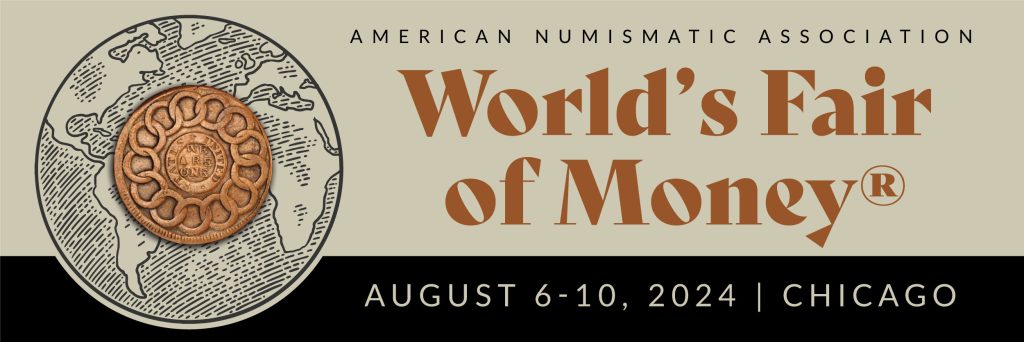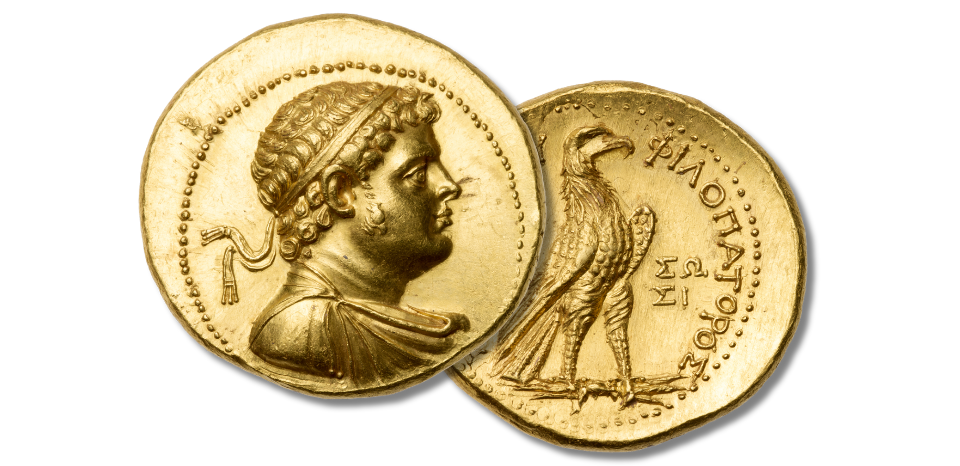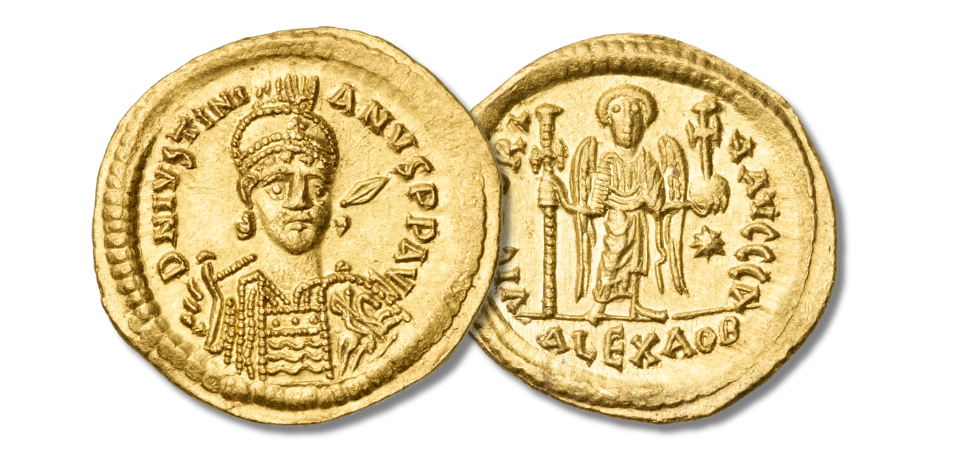Tyrants of the Nile Exhibit
The latest Tyrant Collection exhibit – Tyrants of the Nile – will debut during the World’s Fair of Money. Valued at $5 million, this display presents a comprehensive timeline of Egyptian history that dates back millennia.
From the earliest coin struck in ancient Egypt to a 1938 King Farouk gold proof “Royal Wedding” 500 piastres, this exhibit is packed with show-stopping treasures from a dynamic and revered civilization.
The biggest draw is a c. 361-342 B.C. gold stater struck under the only Egyptian pharaoh who issued a coin, Nectanebo II. The obverse displays a galloping horse (typical of the Hellenistic period). The reverse shows the Egyptian hieroglyphic symbol of a human heart. This is the finest known example of this rare coin.
c. 361-
342 B.C. Gold Stater
Egypt, Pharaonic. Nectanebo II. Gold Stater. This remarkable stater is unique as the only “Greek” coin featuring a type designed to express an idea using Egyptian hieroglyphic script. It was struck by Nectanebo II (circa 361-342 BC), a rebel Saite Pharaoh who resisted the re-incorporation of Egypt into the Achaemenid Persian Empire.
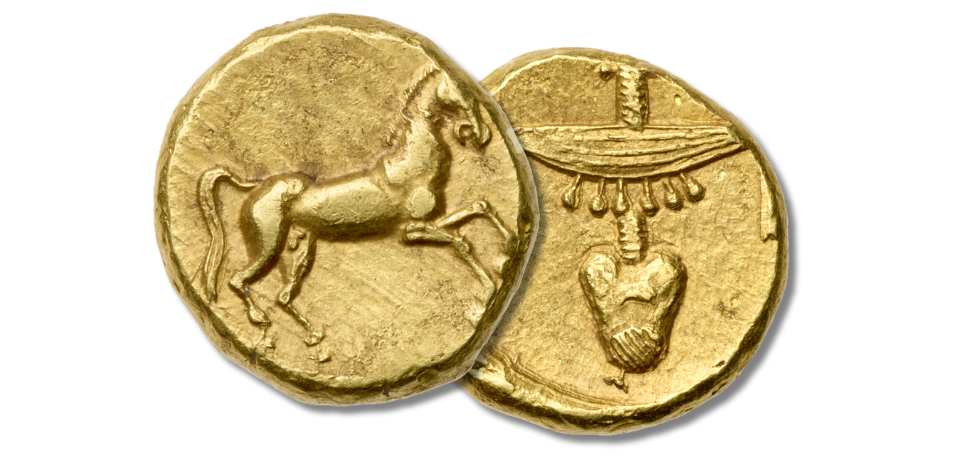
Cleopatra Tetradrachm
Issued in 41/40 B.C.
Ptolemaic Kingdom of Egypt, Cleopatra VII AR Tetradrachm. Askalon, Year 64 Era of Askalon = 41/40 BC. Unique and unpublished, this coin holds considerable historical and numismatic interest. It is a marvelous example of Cleopatra’s exceedingly rare ‘Greek’ silver coinage, with only three other tetradrachms issued by Cleopatra at Askalon known to exist. Their exceptional rarity suggests they were issued sporadically and in very limited numbers.
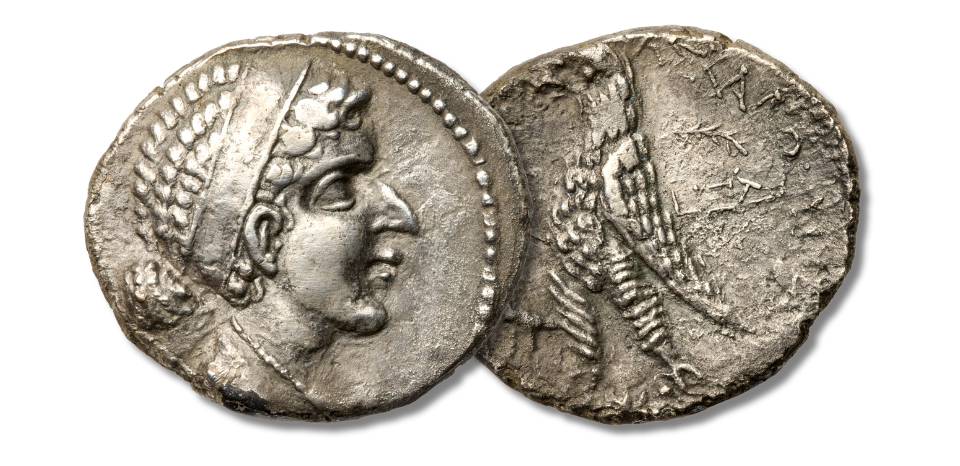
c. 202-200 B.C. Octodrachm of
Ptolemy IV
Ptolemaic Kings of Egypt. Ptolemy IV Philopator, 221-204 BC. AV Octodrachm, Sidon Mint, struck circa 202-200 BC. This coin is of the highest rarity, with only two specimens known. It stands among the most spectacular gold Greek coins in existence, showcasing a magnificent portrait crafted by a master engraver and struck in high relief. A true masterpiece of Hellenistic art, it bears almost invisible marks and remains virtually as struck, approaching an almost flawless state (Fdc).
Justinian I. 527-565. AV Solidus. Alexandria Mint. Struck c. 527-538
Justinian I. 527-565. AV Solidus. Alexandria Mint. Struck circa 527-538. This superb EF coin is extremely rare and unpublished in standard references, possibly only the sixth known example. This type has only recently been discovered, adding great importance, as previously only copper coins of Justinian were known from Alexandria, which featured the mintmark in Greek rather than Latin.
More highlights include:
Ptolemaic Kingdom of Egypt, Ptolemy I, as Satrap, AV Stater. Alexandria, circa 312/11 BC. This coin is extremely rare, one of only six known, with only three in private hands (the others are held in Athens, Lisbon, and Paris).
Vespasian, with Titus, as Caesar. Gold Aureus, AD 69-79. Minted in Alexandria, Egypt after the fall of Jerusalem, AD 70. This coin is extremely rare, with luster present and in superb extremely fine condition (EF).
The Incredibly Rare Dinar of Shajar al-Durr, “Queen of the Muslims”. ISLAMIC KINGDOMS. Mamluks. AV Dinar, AH 648 (1250). al-Qahira (Cairo) Mint. Shajar al-Durr. ANACS AU-55. Only two other examples of a Shajar al-Durr Dinar have been traced, one held permanently in the British Museum collection and another plated in Balog.
1938 (AH 1357) Farouk Gold Proof Royal Wedding 500 Piastres, NGC graded PR67. This coin is near technical perfection, graded at the highest level for this type by both NGC and PCGS, and adds significant interest due to its association with the famous coin collector, King Farouk.
Explore more exhibits and events happening at the 2024 World’s Fair of Money here!
